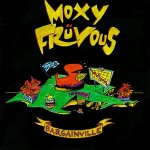The Very Thought of You: Trombone with String Orchestra,
Ian McDougall SOCAN TMMPCD01,
2012, compact disc.
Reviewed by Jennifer Messelink
Juno Award winner Ian MacDougall is perhaps best known for his work in the Big Band idiom, with the Toronto Jazz ensemble Boss Brass. But his former students at the University of Victoria know the now-professor emeritus as a supportive and inspiring trombone instructor for fifteen years. With the release of his most recent recording, The Very Thought of You, Ian McDougall once again has the opportunity to make a difference in the lives of young musicians.
The Very Thought of You benefits the “Ten Mile Fine Arts Student Assistance Fund” with ten dollars of every $20 CD sold going to support struggling fine arts students. The fundraiser was conceived one night after McDougall witnessed a student buying his dinner at a local grocery store: a single potato. McDougall and fellow Boss Brass bandmate Rob Wilkinson have arranged fourteen jazz standards for trombone and string orchestra. Performed in a relaxed, intimate swing ballad style, McDougall brings that warmth and intimacy to this recording of well-known 1930s and 40s classics.
The Thirties fostered the development and popularity of the swing era, and Big Band orchestras led by Duke Ellington, Count Basie and Tommy Dorsey were well regarded. Tommy Dorsey was the first to play the trombone as a lyrical instrument. His featured soloist Frank Sinatra stated, “My greatest teacher was not a vocal coach, not the work of other singers, but the way Tommy Dorsey breathed and phrased on the trombone.” Ian McDougall continues in the tradition with “Everything Happens to Me,” a recognizable standard originally recorded by the Tommy Dorsey Orchestra. McDougall effortlessly blends the lyrical qualities of the trombone with the rich harmonies of the orchestra. “I’m Through With Love” features solo oboe, as well as trombone, and a comfortable conversation develops, creating a multi-voiced orchestral experience. In the memorable title track “The Very Thought of You,” McDougall offers us familiarity with a unique view, reminding us that what is old can still be fresh and new.
The Very Thought of You is available at Lyle’s Place, Munro’s Books, Larsen Music, UVIC School of Music, Fine Arts café, and Ian McDougall’s website.
Jennifer Messelink is a fourth-year student in the School of Music at UVIC.

